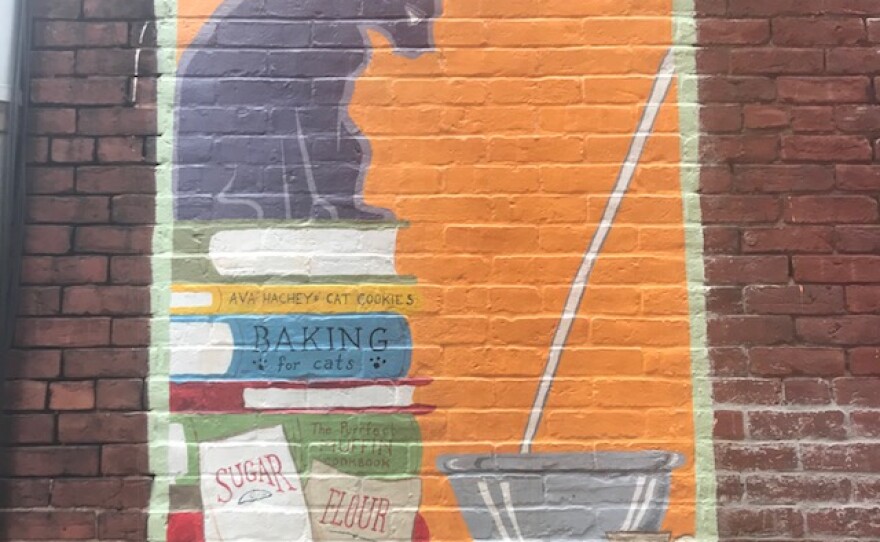In our continuing series Only in New Hampshire, we answer listener questions about oddities of the Granite State and its communities.
For this story, we fielded one from Karen Rosenberg: What is the origin of Cat Alley in Manchester?"
Editor's note - This story is excerpted from the broadcast version, which we recommend listening to here:
"I really enjoy public art and I’ve gone down that alley like loads of times, particularly when my kids were young and taking music lessons at Ted Herberts," Karen said. "And we would dash through this alley and I would notice that there are these murals of cat related things and I just wondered, like, why?"
As a fan of public art, Karen wanted to know more about this project, which isn't actually that public. So, I went to Manchester to find out.

There, I found the the perfect alley scene: trash cans lined up, people smoking out by the dumpster. This is Cat Alley.
The pint-sized side street can be found next to Lala’s Hungarian Pastries at 836 Elm St. and is formally known as “Dean’s Court.”
But why would anyone call it that when you can call it that when you can call it Cat Alley? Where did the nickname come from?
Anthony Williams is an artist and muralist in Manchester. Anthony has produced work for St. Joe’s school of nursing and the Loudon library. He was also the point-person in organizing artists to paint murals in Cat Alley.
"When I came here in 2011 there were only three paintings up here and the rest of the wall was blank," he said.
The idea behind Cat Alley started two years earlier, in 2009, along with those early paintings. But it wasn’t until 2011, with help from Anthony and a rag-tag group of artists that the Cat Alley took the form you can see today.
Artists included an 11-year old girl, a homeless woman who came daily with a rolled up blanket full of brushes and paints, and more traditional artists.
Today, the alley sports dozens and dozens of murals dedicated to cats. Cats, who are in some way, paying homage to Manchester.
"If you were standing in Cat Alley right now you would see how many murals do we have here?" Debbie curtain is a friend of Anthony's and an artist from Londonderry. She painted three of the murals in Cat Alley.
"Every [mural] has a cat," she said, "And every cat is either playing a fiddle, or skating, or this cat just made some donuts, the cat next to it is looking for a bird…"
Anthony believes public art can transform spaces. One of his bigger projects is the Litchfield Lane murals – Litchfield is one of the longest lanes in the city and runs parallel to Lake Ave.
"I counted one time and it was 35 that we did – murals. And people would come when we’d be painting and they’d thank us or they’d walk by and it was so positive always just being in the middle of the city," Anthony said.
"Every mural where the children signed their names hasn’t been tagged. Even the police were amazed saying that the kids haven’t destroyed this but everything around it’s destroyed."

Projects like Litchfield Lane and Cat Alley don’t just happen. It’s an investment – from the community, to organizers like Anthony Williams and artists like Debbie Curtain. The artists don't get paid for their work and volunteer their time.
"One thing about the arts," Debbie said, "You have to pick and choose what you do for nothing."
(Listen to the audio above to hear more about Cat Alley and the people behind it.)












